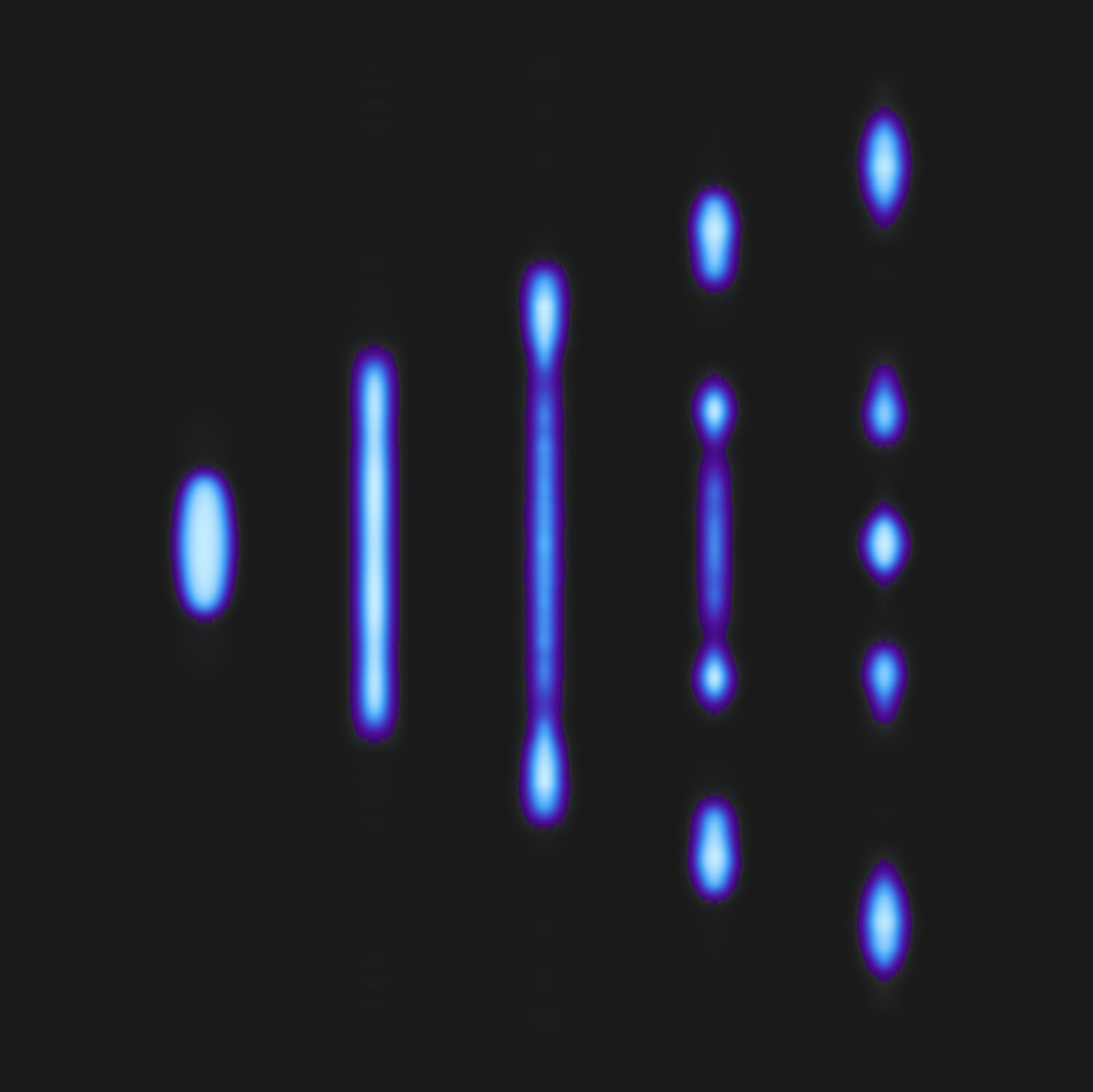Unexpected: a quantum gas turns into liquid 💧
Follow us on Google News (click on ☆)
A team from CNR, the University of Florence and LENS studied the breakup of a quantum droplet. This phenomenon, reminiscent of what is observed in liquids, reveals unexpected properties.

Numerical simulations of a quantum droplet breakup.
Credit: CNR-INO
Quantum droplets form from ultra-cold atomic gases. Although they are gases, they behave like liquids due to quantum effects. This study shows they can break apart due to a capillary instability.
Capillary instability, also called Plateau-Rayleigh instability, is well-known in liquids. It's what causes a water jet to break into droplets. This same effect, never seen before in quantum gases, has now been observed.
Scientists used advanced optical tools to create these droplets. By letting them move in an optical waveguide, they saw the droplet break into several smaller droplets, just like in liquids.
This research, published in Physical Review Letters, combines experiments and simulations. It provides better understanding of quantum states of matter and their future applications.
The results could help create networks of quantum droplets. These networks might be used in high-precision sensors or quantum memories.
What is a quantum droplet?
A quantum droplet is an ultra-cold gas that behaves like a liquid due to quantum effects. This behavior doesn't exist in ordinary gases.
The interactions between atoms, controlled by researchers, stabilize these droplets. This allows creating coherent structures despite their gaseous nature.
These droplets share similarities with liquids, such as surface tension. But their behavior is governed by quantum mechanics, making them unique.
They are ideal for studying the boundaries between classical and quantum physics, and could be useful for future technologies.
How is this phenomenon observed in a quantum gas?
Observing capillary instability in a quantum gas requires extremely precise techniques. Researchers cool atoms to temperatures near absolute zero using lasers.
Once formed, the droplet is placed in an optical waveguide. It stretches due to surface tension, then breaks into several smaller droplets, just like a liquid.
Simulations complement these observations and show in detail how the droplet fragments.
This combined approach provides better understanding of these quantum systems and opens the way to new discoveries under extreme conditions.